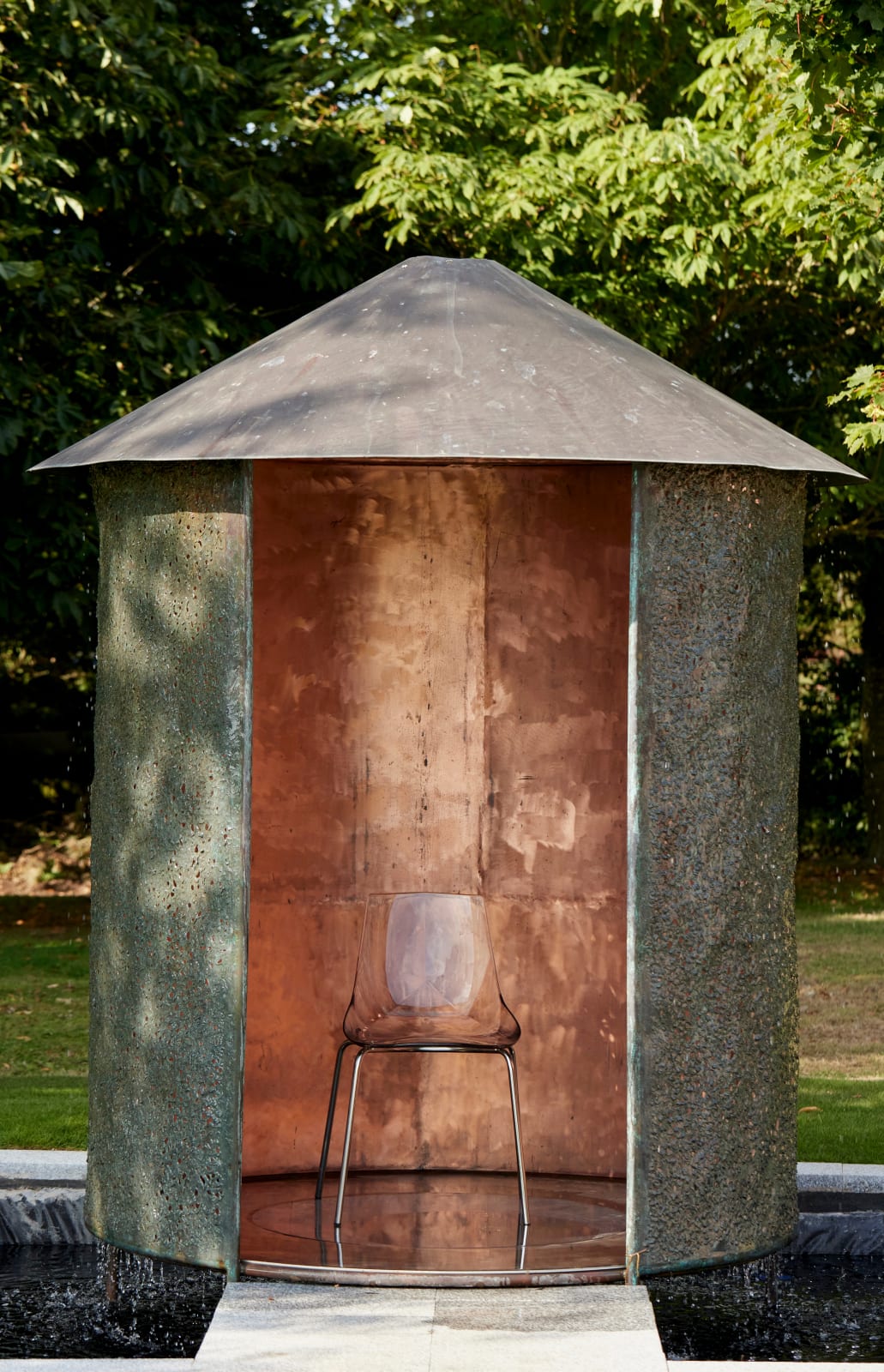Giles Rayner
Exhibition: Carden Park, Cheshire
The Water Hut is a sculpture in its own right which could act as a focal point or secret shelter in a garden. With it, Rayner brings water into the garden - like a Persian, Ottoman, or Moorish paradise garden, with a pool and fountain of pure water on which to reflect. It provides an integral and innovate sensory experience and gives a sophisticated spin on the idea of the hut at the bottom of the garden, a whimsical historical folly with an updated, playful but sybaritic and luxurious twist. The hut’s shape is reminiscent of a romantic, simple, modern minaret or European folly, and has the simplicity and characteristics of an agricultural silo in miniature or a traditional cylindrical dovecote, creating a playful allusion of historical and geographical interpretations and associations.
The Water Hut can be both glamorous and contemplative. An inspiring place - and to suit the mood – it can act as a secret cocoon - an intimate, quiet space for solitude or companionship; or if the mood takes, it can become a lively and sophisticated party den. At night it takes on a different quality and atmosphere, whether lit by the moon or artificially, the light enhances the natural fire-colour of the copper to create an intoxicating space.
During the day, from the inside, the dappled light shines through the pierced and mottled sides which have the organic texture of the trunk of a tree. These small holes allow air to flow through the structure like a traditional Indian jali (perforated or latticed screen) or the middle-eastern latticework on the windows of a mashrabiya (a projecting oriel window enclosed with carved wood latticework). The mashrabiya is understood as a place for drinking or absorbing, or a place from which to overlook or to observe – and the Water Hut lends itself superbly to all of these concepts and activities.
The Water Hut is a raised, copper cylindrical structure, with a domed roof and an open entrance. It has room for seating inside. It sits in a pool of water and is cleverly engineered to have water trickling down its sides. Either side of the entrance, the walls of the hut are pierced giving an organic, mottled and dappled effect so that small shafts of light fleck the inside of the structure; it allows for the sensual effect of the movement of the water to be felt inside the hut, as if the inhabitant is sitting in a gentle waterfall (without getting wet); the side opposite the entrance is a sheet of copper, beautifully burnished and polished to reflect the light. The colours of the beautiful material enrich, merge and blend with the garden setting as the flame-like swirls, shadows and reflections from the copper glow in the light and the external stippled façade fades, in time, to a green-grey hue.
Join our mailing list
Be the first to hear about our upcoming exhibitions, events and news
* denotes required fields
We will process the personal data you have supplied to communicate with you in accordance with our Privacy Policy. You can unsubscribe or change your preferences at any time by clicking the link in our emails.

